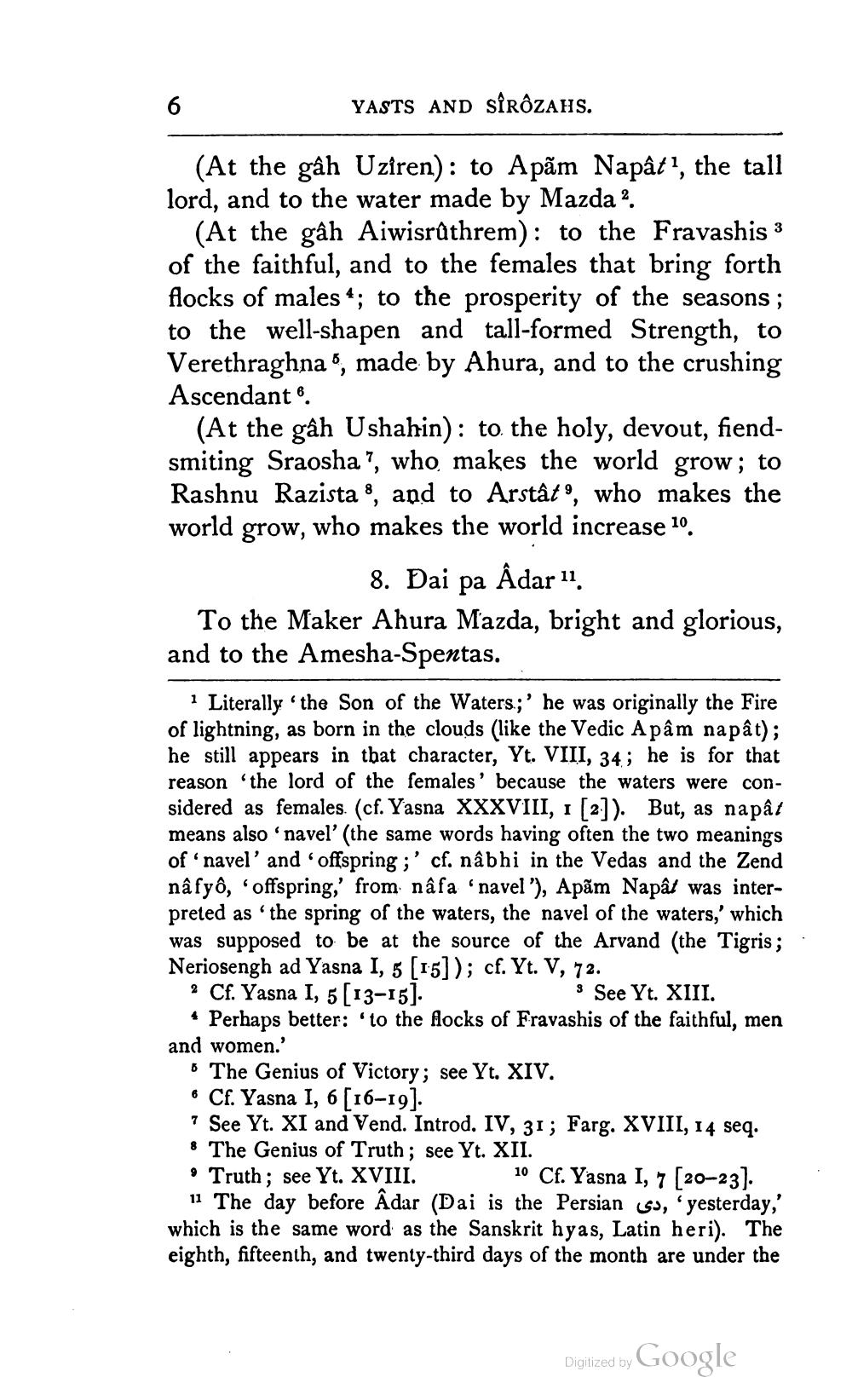________________
YASTS AND STRÔZAHS.
(At the gâh Uziren): to Apãm Napât?, the tall lord, and to the water made by Mazda 2.
(At the gâh Aiwisrůthrem): to the Fravashis 3 of the faithful, and to the females that bring forth flocks of males 4; to the prosperity of the seasons ; to the well-shapen and tall-formed Strength, to Verethraghna, made by Ahura, and to the crushing Ascendant
(At the gâh Ushahin): to the holy, devout, fiendsmiting Sraosha?, who makes the world grow; to Rashnu Razista 8, and to Arstât”, who makes the world grow, who makes the world increase 10.
8. Dai pa Âdar 11 To the Maker Ahura Mazda, bright and glorious, and to the Amesha-Spentas.
i Literally "the Son of the Waters.;' he was originally the Fire of lightning, as born in the clouds (like the Vedic A pâm napât); he still appears in that character, Yt. VIII, 34; he is for that reason the lord of the females' because the waters were considered as females. (cf. Yasna XXXVIII, 1 [2]). But, as napât means also 'navel' (the same words having often the two meanings of navel' and 'offspring;' cf. nâbhi in the Vedas and the Zend nâfyô, "offspring,' from nâfa navel '), Apãm Napât was interpreted as 'the spring of the waters, the navel of the waters,' which was supposed to be at the source of the Arvand (the Tigris; . Neriosengh ad Yasna I, 5 [15]); cf. Yt. V, 72. ? Cf. Yasna I, 5(13-15].
s See Yt. XIII. * Perhaps better: 10 the locks of Fravashis of the faithful, men and women.' 0 The Genius of Victory; see Yt. XIV.
Cf. Yasna I, 6 (16-19]. ? See Yt. XI and Vend. Introd. IV, 31; Farg. XVIII, 14 seq. & The Genius of Truth; see Yt. XII. • Truth; see Yt. XVIII. 10 Cf. Yasna I, 7 [20-23).
11 The day before Âdar (Dai is the Persian (ss, 'yesterday,' which is the same word as the Sanskrit hyas, Latin heri). The eighth, fifteenth, and twenty-third days of the month are under the
Digitized by Google




